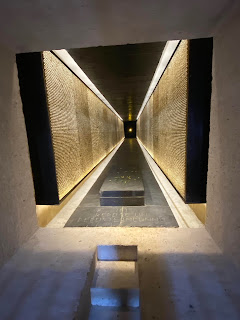Every few weeks I get a version of the question, "How many books are you reading now?" On some online book groups, the question might be, "Do you read more than one book at a time?"
Right now the count is ten physical books, pictured above, two books on Kindle and two on Audible.
If reading multiple books at one time seems weird to you, think about how you interact with friends and family especially during the recent pandemic.
My six kids live in three different states (not to mention six very different states of mind). I see and speak with them mostly on the phone and occasionally see the local kids in person.
I have friends on four continents around the world that I am in touch with once in a while. I have friends from the west coast of America to central Europe I am in touch with regularly. I talk to them, write to them, text them, and keep the relationship we share separate from every other relationship I have.
I listen to a lot of podcasts. Some daily, some every few days or weekly, some less often. Again, no trouble keeping "The Jewish Story" podcast completely separate in my mind from "The Eastern Border" podcast or "The Bulwark" podcast.
A few years ago, I got a formal diagnosis that said I am ADHD, but this pile of books was really all I needed to say I have a mind that bounces from one thing to another.
In fact, when I started college in my late 20s after the Army, I never had a problem with multiple classes and different books for every class.
I am not just randomly reading books from my own shelf or from recommendations. I am part of several book groups and read books with friends. So there is more order to my reading than it my appear.
The List:
--"
Maphead" is a book about people who are obsessed with maps, including the author. I am clearly a maphead.
--I read Leonard Cohen's
"Book of Mercy" a book of poetry while I am on the train. Sometimes I write after reading him. Even his prose is lyrical.
--With another friend, I am listening to all five books of the "
Game of Thrones." I am currently at the beginning of book five. I am hoping the 70-year-old author of the series, George RR Martin, remains healthy long enough to finish the final novels--a total of seven.
--The other book on Audible is "
The Greek Way" by Edith Hamilton. Published in 1930, this book summarizes Greek culture in a lovely review of art, history, politics, drama, comedy, philosophy and how they all fit together.
--The other book on Kindle is "
Critique of Pure Reason" by Immanuel Kant. Along with it I am reading
"Kant" by Karl Jaspers. These books are part of a weekly Karl Jaspers group related to the Hannah Arendt group. We read a chapter or two per week from either or both books.
--Finally, I took "
QED" off my shelf and started reading a few pages at a time because I want to know as much as I can about light and quantum electrodynamics.
Do I confuse the books? Do they collide in my head? Sure. But I have friends and relatives who are very different people and keep them all separate, mostly. The books I read have vastly different character and subjects so they are as distinct as friends.
QED.....[quod erat demonstrandum]
























